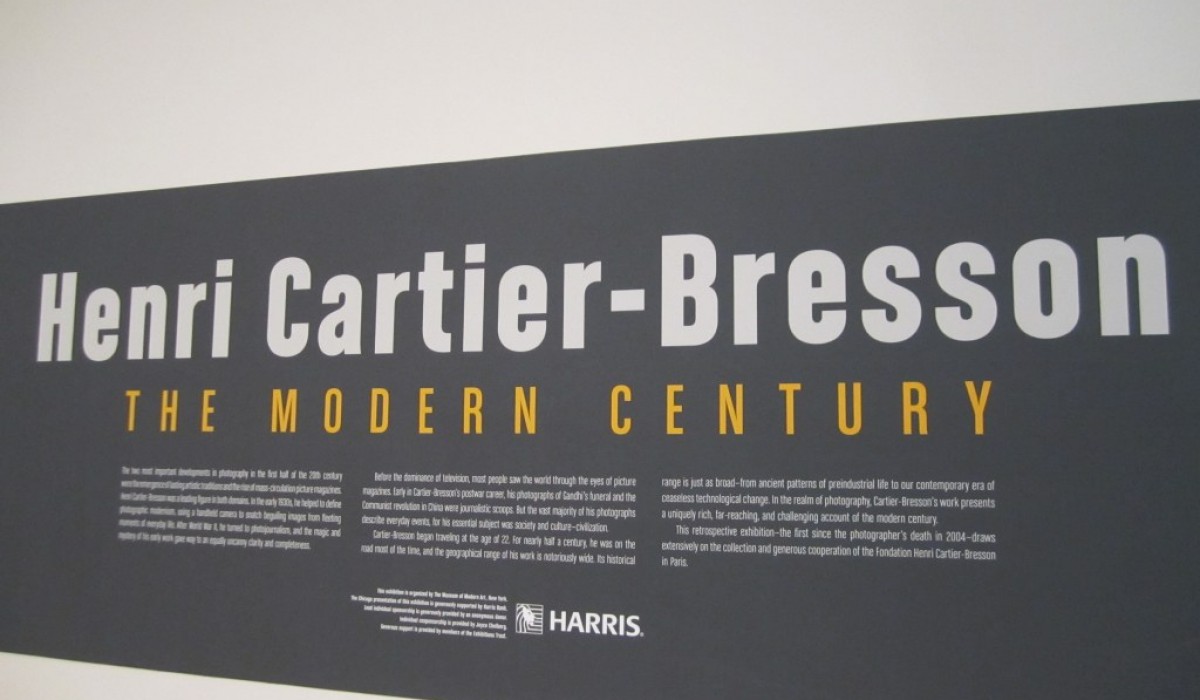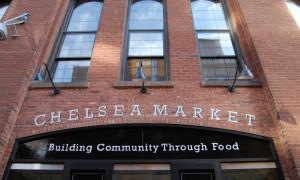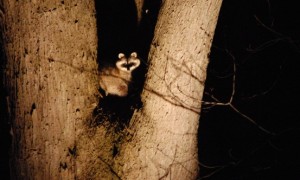I am totally in awe of the work of Henri Cartier-Bresson. In fact, I’m so taken with the this rock star of photojournalism that I went to see his work twice–at two different museums.
The first time was in NYC last May at the Museum of Modern Art. It captured my interest to the point that I was drawn to see it again last week. Now at the Chicago Institute of Art, the exhibit was even more captivating. Anyone with any interest in photography will love the exhibit, ‘Henri Cartier-Bresson: The Modern Century.’
Spanning the 45-year career of this French photographer, the exhibit is huge and covers a wide range of his work. He not only basically founded the idea of photojournalism but he took marvelous portraits as well. Born in 1908 it was some time around 1930 that Cartier-Bresson started taking photography seriously as a means of artistic expression.
Several things really stand out in my mind as I think about this exhibit.
The influence of being able to use a small hand held camera is a game changer in the field of photography.
Cartier-Bresson’s mission became “fixing eternity in an instant.” His small hand held camera made this possible. The Leica opened up new possibilities in photography—the ability to capture the world in its actual state of movement and transformation. Prior to its introduction, the cameras were large and the process of picture taking laborious. Often photos were staged.
Cartier-Bresson has been quoted saying, “I prowled the streets all day, and feeling very strung up and ready to pounce, ready to trap life.” You see that in his images. He even painted the silver parts of his small Leica black so it wouldn’t attract attention as he worked to capture fleeting moments of the world around him.
The other outstanding influence on his career is his training as a painter.
He studied painting for ten years before focusing on photography. This study provided him with a strong artistic sense that informed his compositions. Clearly the success of much of his work is due to his eye as an artist. This is interesting to me. I have signed up for a photo class in the fall and am now thinking that I should be wielding a paintbrush if I want to improve my photography skills.
What I really loved about the exhibit, however, were all the images of his travels around the world, documenting what he calls, “the decisive moments.” He was in India when Gandhi was assassinated, Russia after Stalin’s death, and China during the Great Leap Forward. The photos and the accompanying magazines where much of his work was published in the exhibit are a telling history lesson for us all. Oh, would I have loved to be the assistant, tagging along on the many adventures he documented.
It is an exhibit well worth going to.
The other exhibit I attended on this marathon of art day in Chicago is the current Calder exhibit called, “Alexander Calder and Contemporary Art: Form, Balance Joy” at the Museum of Contemporary Art. When I first saw it announced in my newsletter, I was a bit surprised. I don’t think of Alexander Calder as a contemporary artist. My friend, and traveling buddy, who is an artist and retired art teacher, explained that he was innovative in his time.
Calder went through a period where art critics were a bit snobbish about the “pretty-ness and simplicity” of his work. According to some of the research I did he is deemed to be “cool again.” His skill, artistic vision, talent and huge body of work are revered.
This exhibit was unusual in that it was mounted in two large rooms. One held all the Calders—stabiles, mobiles and sculptures. The artistry is evident. It was a wonderful experience to meander through and around the installation of many pieces.
The other large room contained the work of seven young and contemporary artists, selected because Calder inspired them.
My friend, Peggy, and I were both a bit disappointed with the second part. Some of the quality didn’t seem to be of a very high standard and the connection to Calder seemed a huge stretch. There were a few standouts that we particularly liked.
But, that’s the point isn’t it? Exhibits like this are designed to invite discussion, to be stimulating and to encourage pondering while providing “of the moment” pure pleasure. It did all of these for me.










Comments
1 CommentBarb
Sep 13, 2010Susan,
I continue to appreciate your travels as well as your reports on same. The Cartier-Bresson exhibit sounds wonderful! Thanks. A visit must be scheduled for the Rohwer household for this and the Calder.